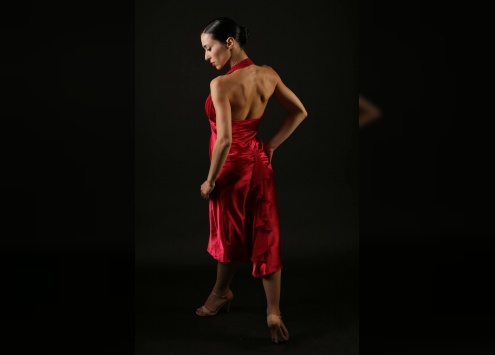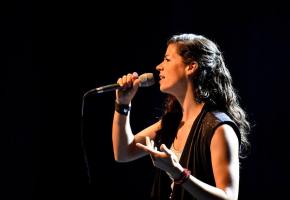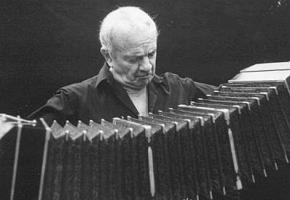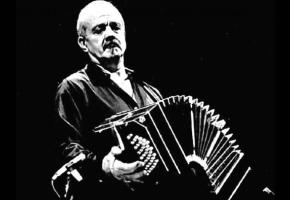#Piazzolla100 kicked off in the magnificent Teatro Colon of Buenos Aires this week with a concert by the great tango composer’s widow and muse, the singer Amelita Baltar who inspired his opera Maria de Buenos Aires. She is in her early 80s now, has survived a heart attack on air and still looks like a girl; slim as a whistle with long blonde hair, proof that tango keeps you young!
I met her at the end of 2019, when she gave a concert at Centro Cultural Torquato Tasso in the heart of San Telmo, celebrating 50 years of Balada para un Loco (Ballad for a Nutcase) also written for her. She immortalised this beautiful tango canción for which she is adored by porteños.
I fell in love with this song and always wanted to sing and perform it. For me it is the essence of Piazzolla, a setting of lyrics by his friend, the great tango poet Horacio Ferrer, who conjures up a street scene near Callao, where a lonely woman is suddenly carried off by a crazylooking tramp on a journey through the city, speaking of ‘La magica locura total de revivir, veni, voli,veni tra lara lalala..’ (The magic madness of love which revives, come fly with me…)
A young tango and classical guitarist from Buenos Aires, Sebastian Pecznik (check out his award-winning CD Piazzolla), told me every porteño child’s mother sings this song to them before bedtime! It is a simple heartfelt song, part cabaret, part performance which takes the listener of this unique three-minute tango across real streets, Avenida Santa Fe and Callao, in a journey of music, song and dance-describing the dancers we see in the streets of La Boca and San Telmo every day.
So who was Piazzolla, and where does he fit in to tango history?
Tango is urban music of the port city of Buenos Aires and the River Plate. It is the product of a cultural melting pot and the result of multiple layers of migration and interaction, each leaving its mark on the music without effacing the previous ones.
In the nineteenth century, the influence of Cuba on Argentinian music was huge, with the Habanera craze reaching Buenos Aires in about 1850 and dominating popular music for the rest of the century. The Habanera rhythm morphed into the original tango, the “Tango Criollo” of the Guardia Vieja or old guard.
However in about 1915 the whole basis of the music changed. Street bands were starting to be replaced by established quintets, sextets and “orquestas tipicas” as the music became more mainstream. The habanera underpinning of the tango also disappeared and was replaced with a four-square march type rhythm, as a massive influx of European immigrants, primarily from Italy, moulded the music to their tastes. But the habanera was still lurking below the surface, and returned in the form of subversive sub-rhythms and embellishments that pervaded the music, as well as in a new faster, jauntier tango, the milonga, that came on the scene in 1931.
Meanwhile tango was exported throughout the world and emulated by musicians from Tunis to Helsinki and from Paris to Istanbul. An interplay between the exported tango and the native form, a culture of “ida y vuelta” or back and forth, also added layers of complexity. In Buenos Aires the tango orchestras continued to compete and innovate supported by a fabulously rich clientele, until in 1955 the economy crashed and tango changed once more with the appearance of Astor Piazzolla's “Nuevo Tango” - a tango music primarily for listening rather than dancing.
All my Argentinian musician friends are touched by his legacy. I even heard a gig in Buenos Aires in 2019 called ‘Beyond Piazzolla’ where newly written music was clearly following in this great tradition. And after every gig there is always an opportunity to chat tango with musicians, in the place where tango music really is life.
Piazzolla’s life reads like a movie script, just like Carlos Gardel’s real movie star/tango star life. Born in Mar la Plata, his parents emigrated to New York where the young talented musician was taught classical piano. The family lived in one of the toughest parts of Manhattan, where the Italian and Jewish communities often fought street battles, as in the movie Once Upon a Time in America’.
He was influenced by Jewish music from the synagogue where he delivered candles, Jazz and Rachmaninov, who was his piano teacher’s sometime teacher. However a chance encounter as a mere boy, with the great Gardel, who suggested he take up the bandoneon, brought him irrevocably into the tango world . He even played a part in the movie El dia que me quieras, made just before Gardel’s untimely death in a plane crash, his funeral attended by thousands of weeping Porteños. If he had joined the band as Gardel requested he could also have died with the maestro, but his father had other ideas for his brilliant son.
Despite subsequent classical studies in Paris, tango would be the world which inspired his music and led him to develop his own unique style, Tango Nuevo, from the early influences of the composers of The Golden Age of Tango to music which would fascinate the whole world. Pieces like Adios Nonino, a tribute to his beloved father, the intoxicating Libertango, the operita (as he called it), Maria de Buenas Aires and the beautiful ballads which we present in Violettas’ Last Tango alongside the gorgeous instrumental Oblivion and Milonga del Angel.
Happy Birthday beloved Maestro, may your music continue to be heard by all lovers of music across our world in these difficult times!
Ann Liebeck's Violeta's Tango is streamed tonight at 8pm
















